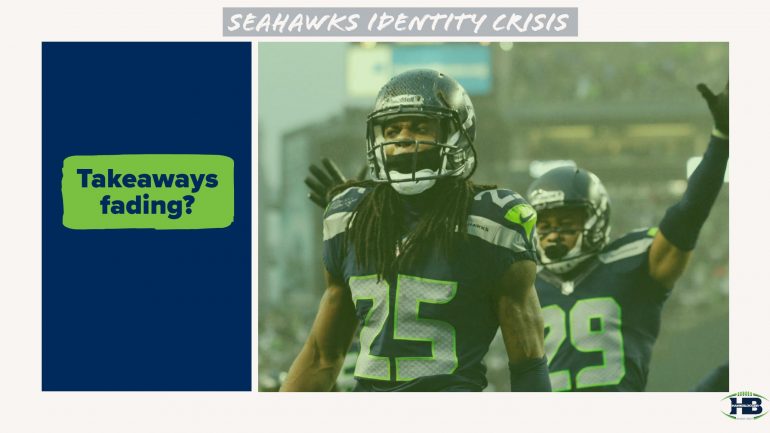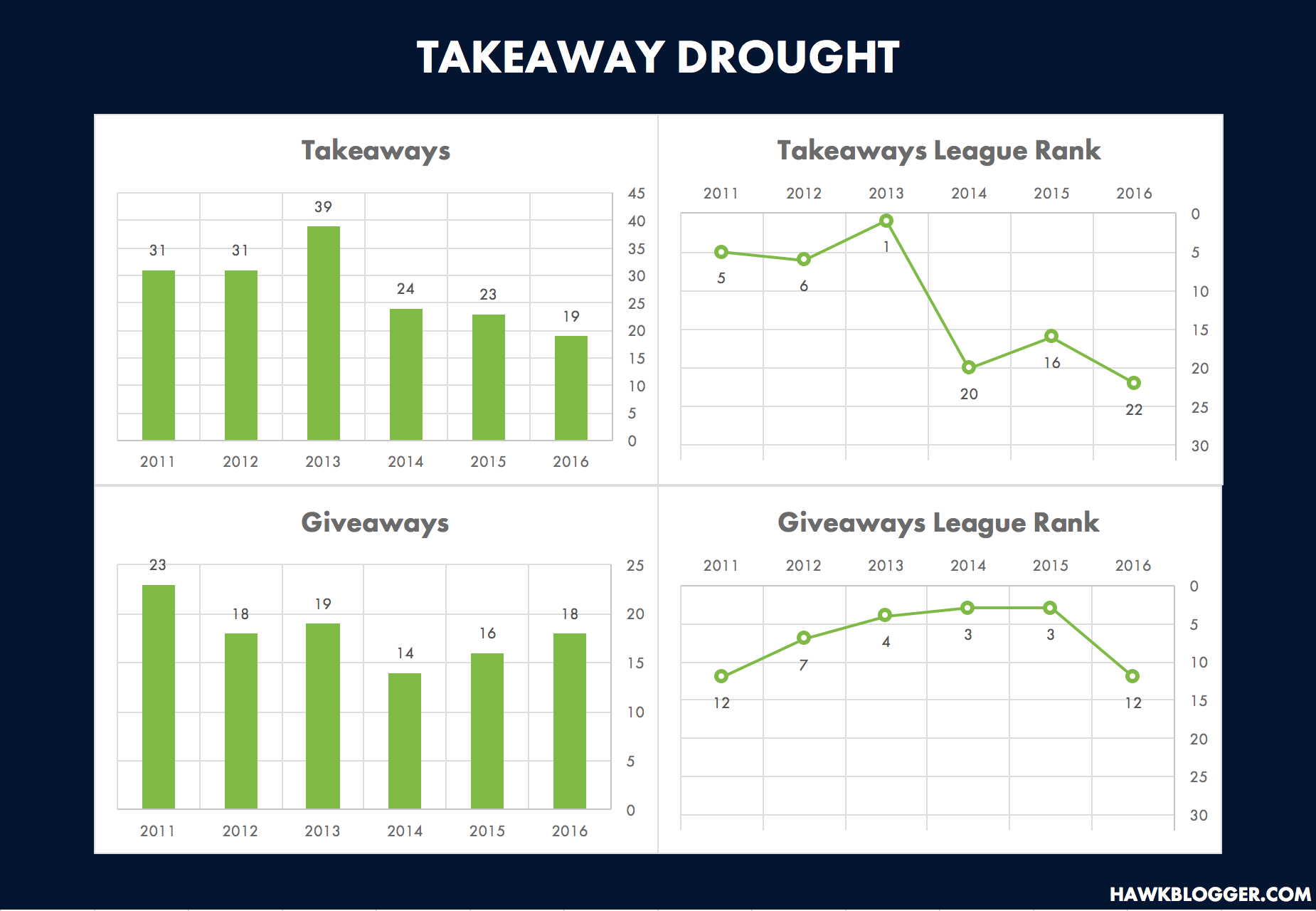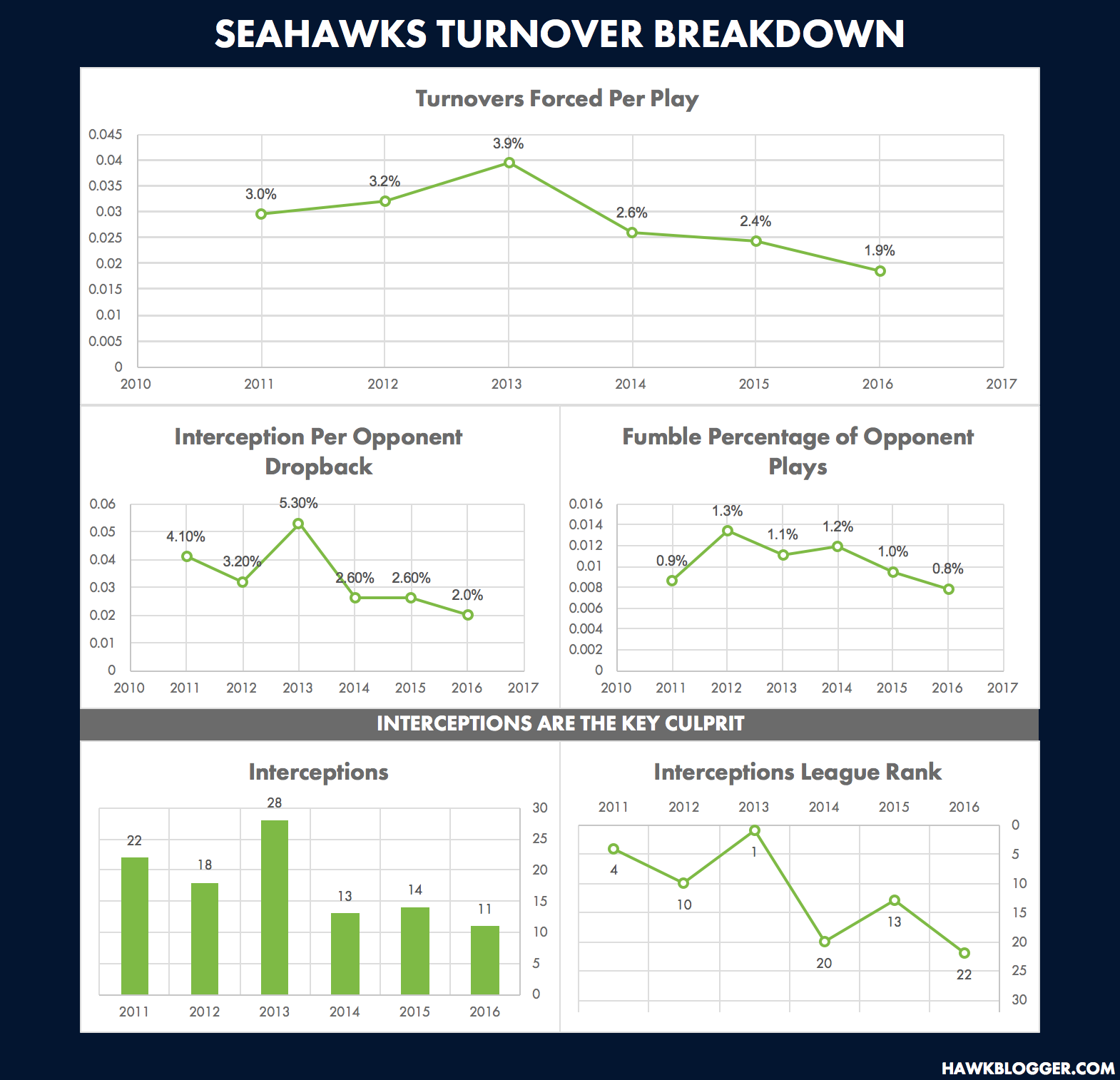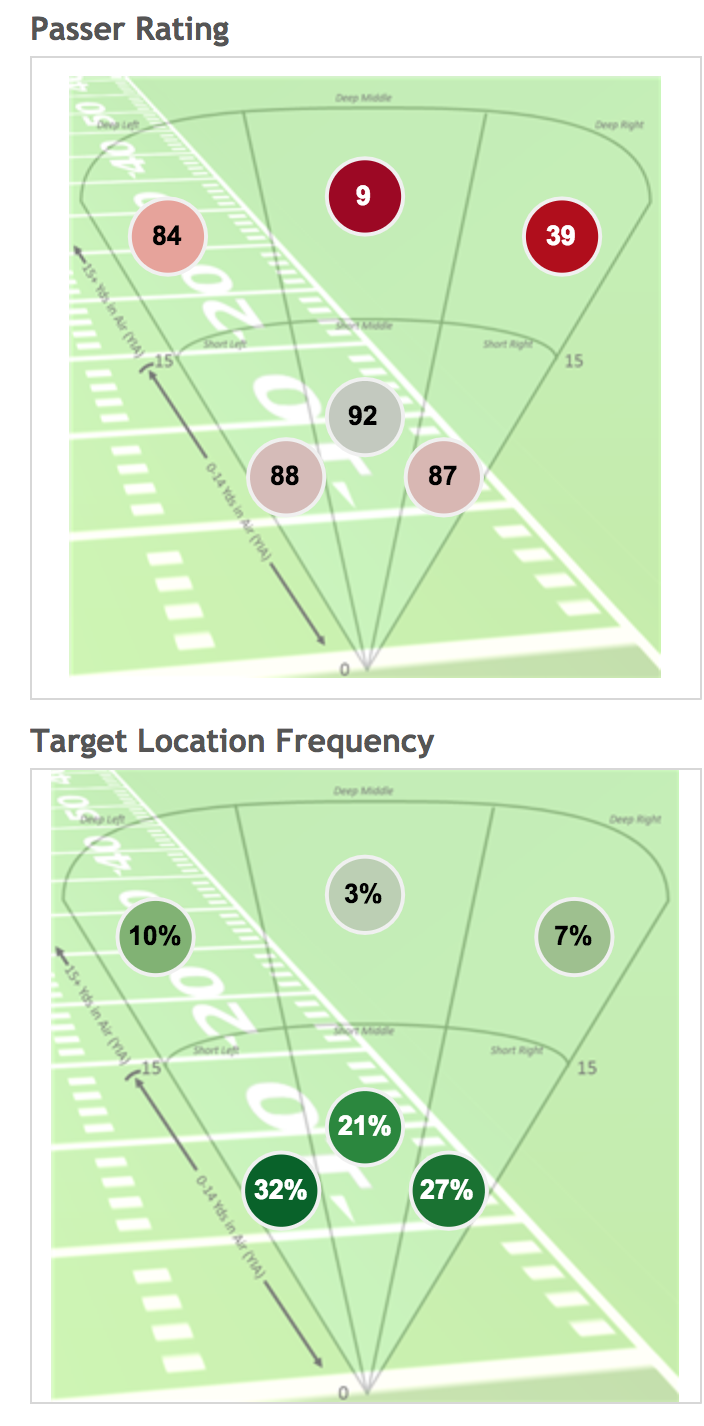Much has been written about the Seahawks that has nothing to do with the play on the field. Whatever the reality is in that locker room, there are more pressing football questions facing the Seahawks that must be addressed if this team is to lift another Lombardi Trophy. Pete Carroll brought a crystal clear football philosophy with him to Seattle. It helped create one of the most talented and tough teams in the NFL over the past six years. Between 2012 and 2014, the Seahawks averaged 12 wins per year and played in two Super Bowls. They have averaged 10 wins in the two years since, and have lost badly in the second round of the playoffs both times. There is evidence that the Seahawks have lost touch with the philosophy that helped them rise to the top. How they confront this identity crisis will have a far greater impact on their football fortunes than any soap opera brewing behind the scenes. In this series, we will explore different aspects of Carroll’s philosophy and assess whether the 2017 Seahawks are in position to recapture their dominant formula.
“If you don’t have a clear view of your philosophy, you will be floundering all over the place. If you win, it will be pure luck.” – Pete Carroll USC Coaching Clinic
PART I: Offensive Philosophy
[divider]Part Two: Creating Turnovers[/divider]
A foundational element of Carroll’s approach to football is creating turnovers on defense and preventing them on offense. He believes in this based on experience, as well as years of data that indicate a correlation between turnover differential and winning. There is little doubt among his players where this stands in his list of priorities.
“The first meeting that we have every year, [Pete Carroll] raises up the ball and he says, ‘It’s all about the ball. We’ve got to take care of the ball. We’ve got to steal it from the offense and take care of it when we have it on offense.’ Those things don’t change and that’s probably one of the things I love most about Pete is his consistency when it comes to his philosophy.” – Doug Baldwin Jr. during a recent press conference
He spends one day of practice every week of the season focused on turnovers. The team looks for innovative new ways to rip and tear at the ball to dislodge it from the ball carrier, while the offense focuses on holding the ball high and tight to reduce the risk of it getting punched free. All this attention helped the Seahawks rise to the top of the NFL in turnover margin during their Super Bowl run. That prowess has not stood the test of time.
The Seahawks have seen their turnover margin, as well as their ranking in that category across the NFL, decline in each of the past three seasons. There margin was halved the year after their first Super Bowl, and dropped even more drastically from 2015 to last year. In all, they went from being the best in the league in this area to being middle-of-the-pack. That cannot sit well with Carroll, and we know it cannot be because he is emphasizing it any less. So what is going on?
Breaking down the Seahawks turnover margin decline
Turnover margin is composite metric based on two other statistics: takeaways and giveaways. To better understand what is happening with the Seahawks on the turnover front, we first must start by examining how Seattle has done on both aspects.
You can see that there has been a negative trend for both, but the drop-off in takeaways is far more severe. In fact, the team had improved drastically in protecting the football in 2014, which masked the massive drop in takeaways. The giveaway level rose to 18 last season was still below the Super Bowl winning year. Seattle wound up being ranked fourth in turnover margin in 2014 despite taking the ball away fifteen fewer times than the previous season. That is nearly one less takeaway per game. All this is to highlight that the Seahawks are still pretty good at taking care of the ball. They also have far more control of limiting their giveaways than getting more takeaways. They should be able to reduce their giveaways by regaining some of the balance on offense with a healthier running game.
Takeaways, though…those are not so easily set aside. The trend there is disturbing both in its severity and the fact the team does not have as much control to make a difference. From 2011 to 2013, the Seahawks averaged 33.7 takeaways per season. Over the last three years, the team has averaged just 22 takeaways per season, and that dropped to a six year low of 19 last year. During that time, they went from being one of the best teams in the league at taking the ball away to one of the worst (bottom third of the league). Just like turnover margin is a compound metric, takeaways come in the form of interceptions and fumbles, so let’s take a closer look to see what is going on there.
The top chart above shows that the Seahawks trouble with takeaways has nothing to do with volume of chances. They are half as likely to take the ball away on any given play than they were in 2013. The next row of charts separates that out into their efficiency for intercepting the ball per opportunity and the fumbles recovered per opportunity. Chances for interceptions only happen when an opponent drops back to pass. Fumbles can happen on any play.
Seattle has had more trouble recovering fumbles as a way to create takeaways, but the decline there is minor compared to what is happening with interceptions.
The Seahawks are nearly three times less likely to intercept a pass than they were three years ago.
That is a smoking gun in this little investigation of ours. The last row of that graphic puts the focus completely on interceptions, and we see further confirmation that the Seahawks takeaway problem is almost exclusively driven by a drastic reduction in their ability to intercept passes. In fact, their league rank in interceptions closely maps to their league rank in takeaways. Both saw them go from #1 in the league to #22 in a few seasons.
What changed? The scheme is the same. That leaves personnel, performance, and coaching as the obvious scapegoats. Both likely played some role, but there is another more insidious reason I believe this is happening.
Factors outside Seattle’s control
Think back to the first road game of the 2014 season. The Seahawks played Philip Rivers and the Chargers in San Diego in sweltering heat. Time and time again, Rivers would check down to his running backs and tight ends for short passes underneath the Seahawks zone coverages. They were content to dink-and-dunk instead of trying to beat Seattle over the top. This approach was effective at moving the ball down the field with little risk of turnover. Ultimately, it helped the Chargers score 30 points and become the first team to beat the Seahawks by more than seven points in nearly three years.
Eighteen of the Rivers’ 37 pass attempts (49%) went to either running backs or tight ends. Another 10 passes went to Eddie Royal, their slot receiver, who averaged just 9.9 yards per catch. That means over three-quarters of Rivers’ attempts went to short targets. Statistics show those are very difficult to intercept.
Warren Sharp does some great work with advanced statistics on the NFL, and helped me find some statistical evidence to test a few of my hunches.
Turnover rates vary by type of target
Sharp has a great table that shows the propensity for turnovers by position, down and distance. The important insight is that, in 2016, passes to running backs were the least likely to result in a turnover (just 1.2%), passes to tight ends were next (2.4%), and wide receivers were last (3.2%). Sharp explained that opposing offenses threw 42% of their passes to RBs or TEs on early downs last season before Earl Thomas was injured. Everything changed after Thomas went down, but that’s a separate article. The point is that opposing offenses are throwing to safer targets, and ones that are not typically defended by some of their strongest turnover creators like Richard Sherman. They also are not attacking downfield as much.

This table shows the average depth of target against defenses in the first 11 weeks of the 2016 season. You can see that the Seahawks saw the third-highest percentage of passes (52%) within six yards of the line of scrimmage. Even if those are going to receivers, they are very difficult to intercept.
Avoiding Sherman and Thomas
Not only are teams throwing short and to running backs and tight ends, they are avoiding some of the Seahawks best playmakers. Sharp has a great visualization (shown below and available here) of opponent passer rating and frequency based on both depth and direction of pass against any defense. The following shows how teams attacked the Seahawks defense when Thomas was healthy.
The vast majority of the throws are short and to the left. They avoid deep middle and deep right, and for good reason. Their passer rating in those two zones were an abysmal 9 (deep middle) and 39 (deep right) against Seattle.
“[Favoring the left side] is completely backwards from the NFL average. With a majority right handed QBs, they like to attack the right side of the field more.” – Warren Sharp, SharpFootballAnalysis.com
Teams did have reasonable success attacking deep left (84 passer rating). It is not quite as simple as blaming DeShawn Shead. Remember the infamous Falcons game in Seattle when miscommunication between Sherman and Kelcie McCray resulted in two blown coverage deep touchdowns down the left side.
There is no simple fix to the takeaway problem
Unfortunately, Sharp does not yet have historical data that would allow us to look at trends in depth of target against the Seahawks. That would be absolute proof, but having watched every one of those games and seeing this data for last season, I’m convinced that a significant part of the takeaway problem is due to how offenses are attacking the Seahawks.
The team knows it. Kam Chancellor mentioned teams attacking them “underneath our zones” in a recent press conference. Carroll’s philosophy has always been to take away the deep pass and force teams to string a series of shorter plays together to get down the field. Careful what you wish for. A big part of how the Seahawks generated turnovers was when teams tested them downfield either due to confidence or impatience. It takes discipline to do what Rivers did in that game. Many quarterbacks and coaches eventually want to push the ball down field, and that is when the Seahawks feasted.
Personnel likely plays another role here. Brandon Browner, though flawed in some ways, was a prodigious playmaker. He excelled both in intercepting passes and stripping the ball free. Walter Thurmond III was arguably the best nickel cornerback in the league. Having those two made it far harder for teams to avoid the likes of Sherman. That is why it was so important for the Seahawks to get quality young corners from this draft. That may be the aspect of this equation they have the most control over.
Coaching may also play a factor. Dan Quinn was fabulous at scheming and play calling. Kris Richard has not yet proven he has a plan for how to adjust to what the Seahawks are facing.
It is going to take some of Carroll’s most creative coaching to help guide Richard toward a solution. This could be one of the reasons Malik McDowell was so attractive to Seattle. Adding more height to the defensive line could be part of a strategy to disrupt the short passing lanes by focusing less on getting to the quarterback on early downs and more on getting hands up to deflect passes and make it harder to see. McDowell is 6’6″, Nazair Jones is 6’5″, and Dion Jordan is 6’6″. All three were added this offseason. Shoring up the right side of their defensive backfield and their nickel corner spot would help as well.
The truth is, there may not be a silver bullet that can allow the Seahawks to increase their takeaways. Carroll’s “all about the ball” mantra likely needs to focus more on protecting the football in order to create a meaningful turnover margin, and simply stay disciplined on defense. That reinforces the need to get their running game back on track.
Part three of this series will look at explosive plays, both on offense and defense.




